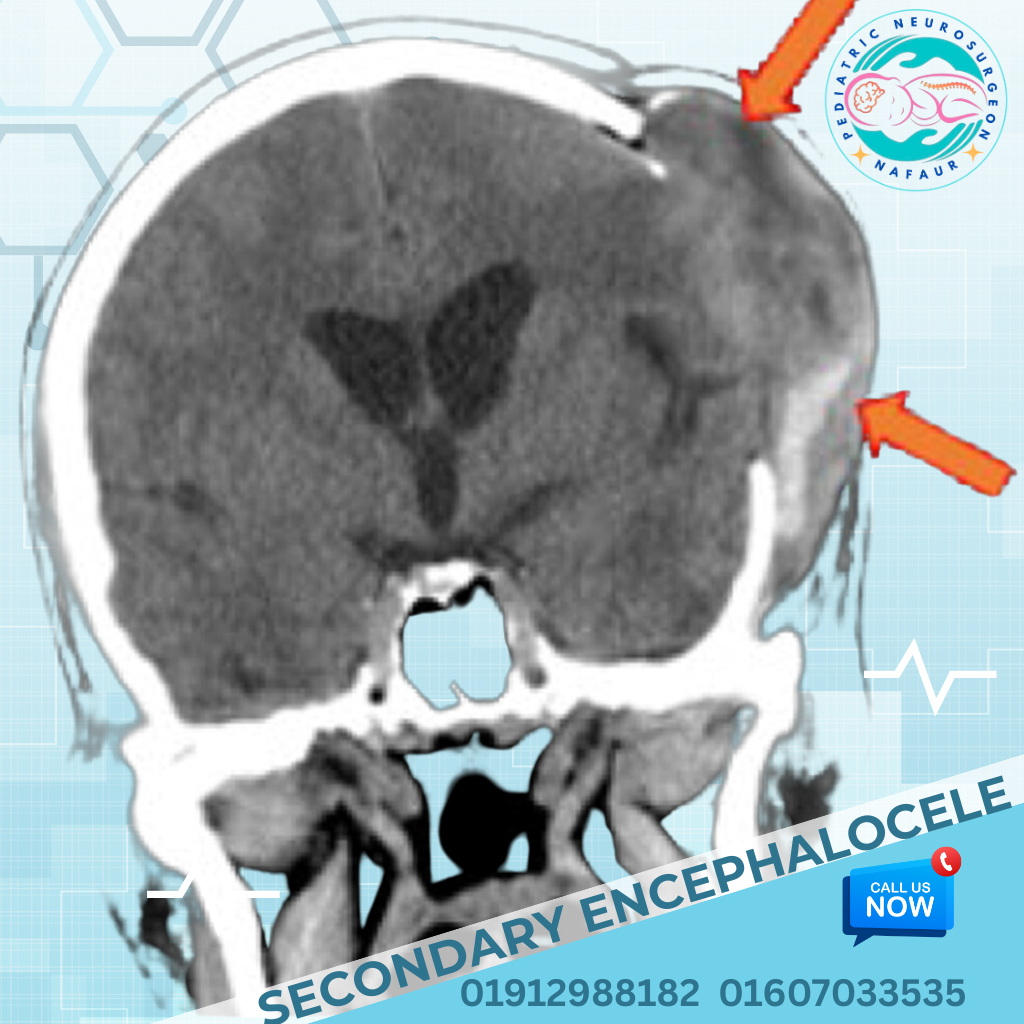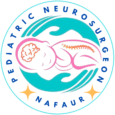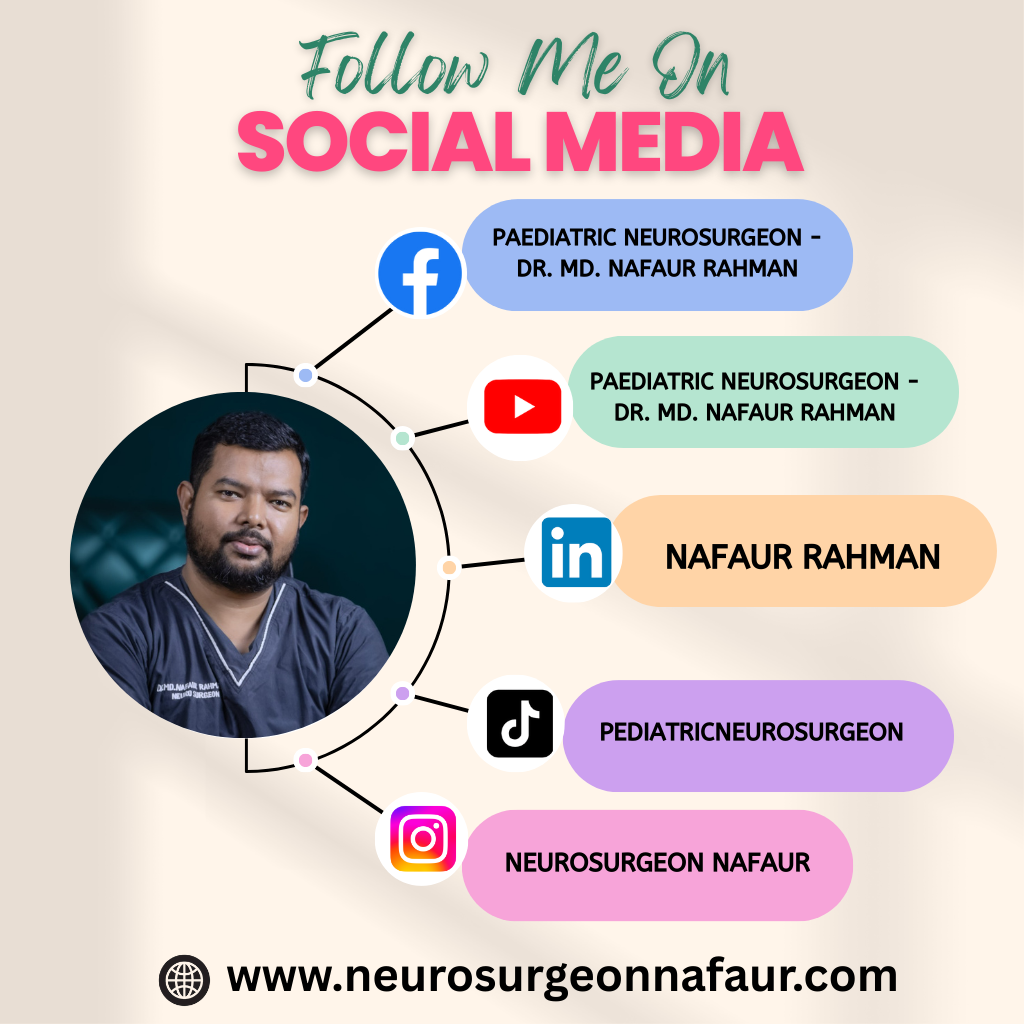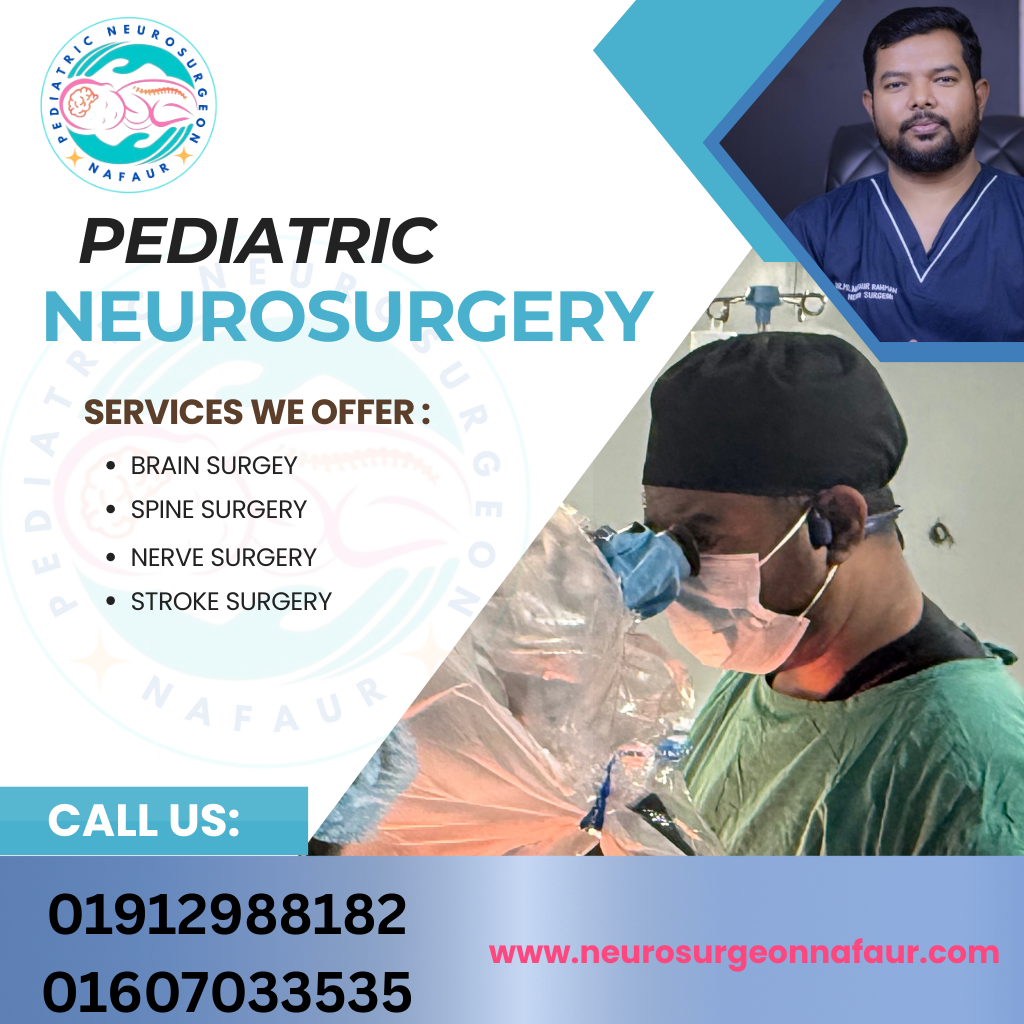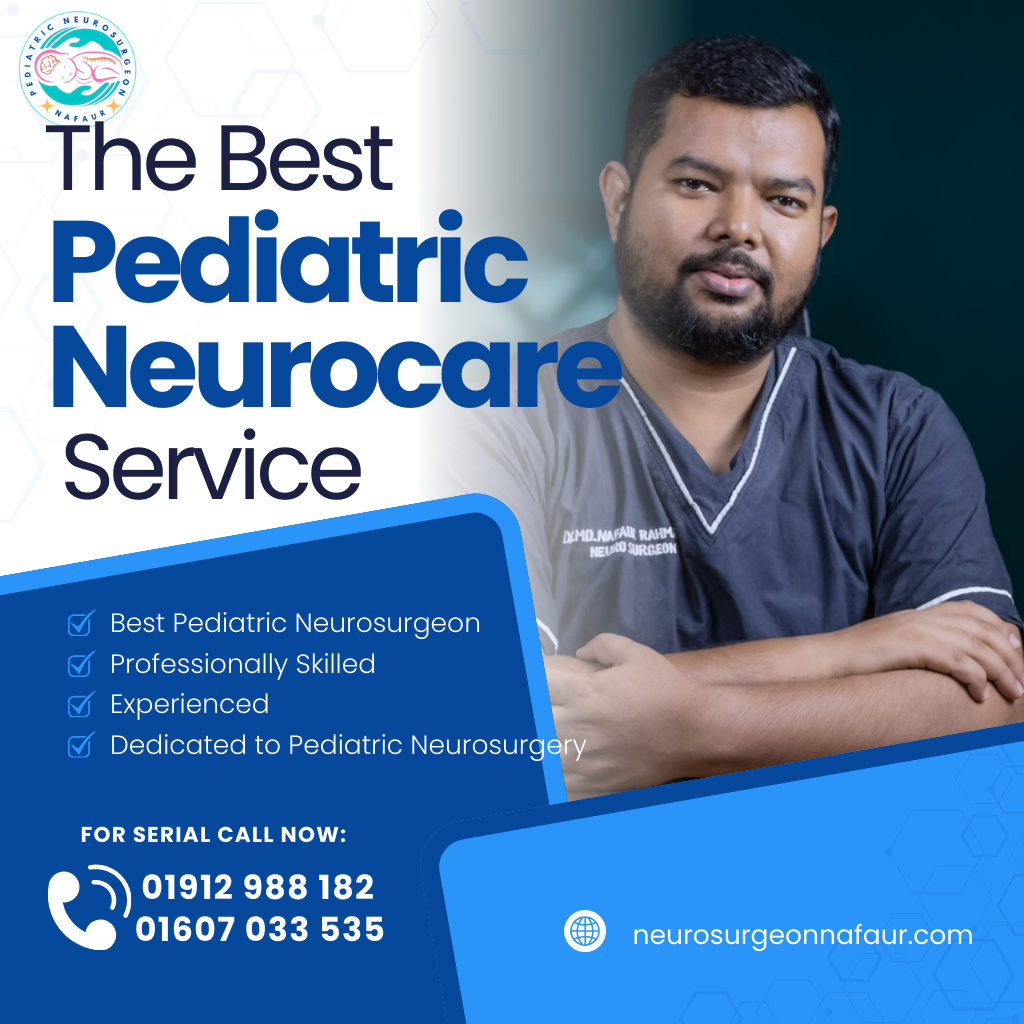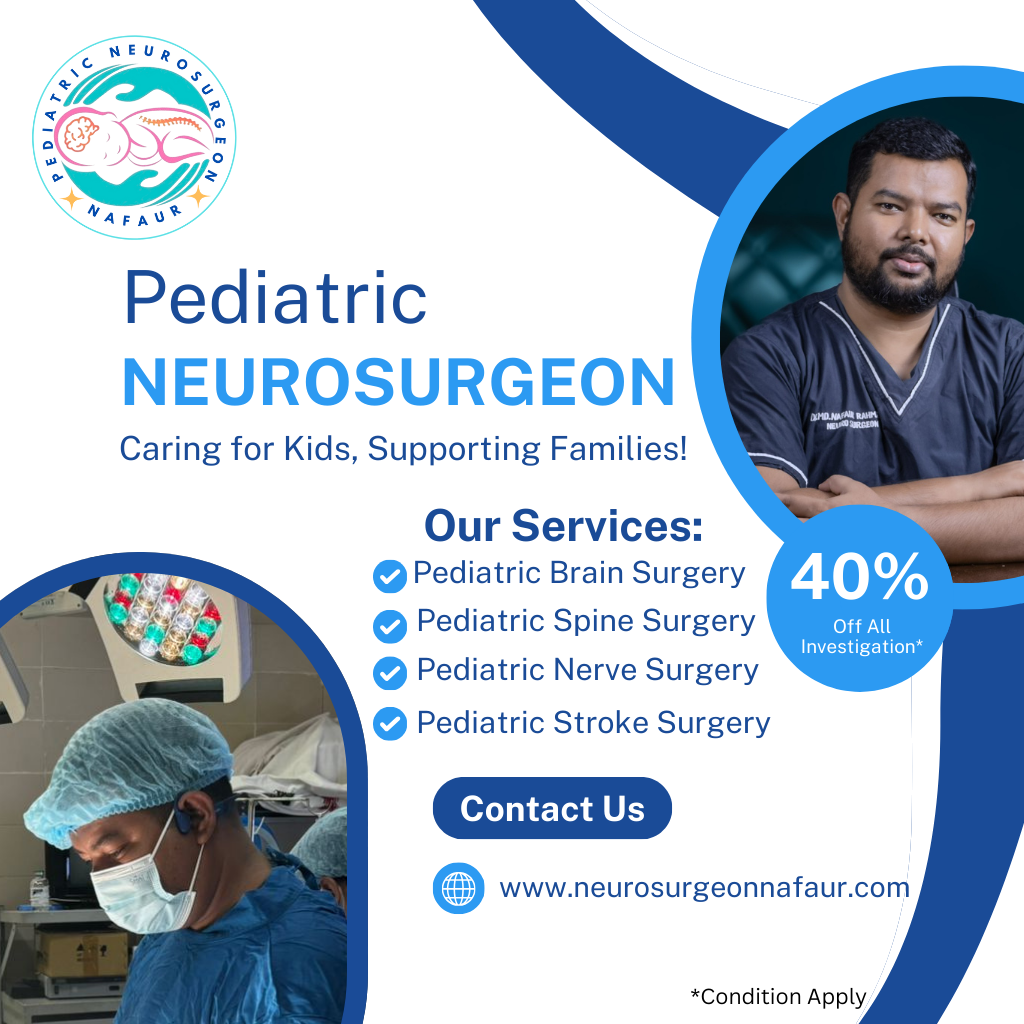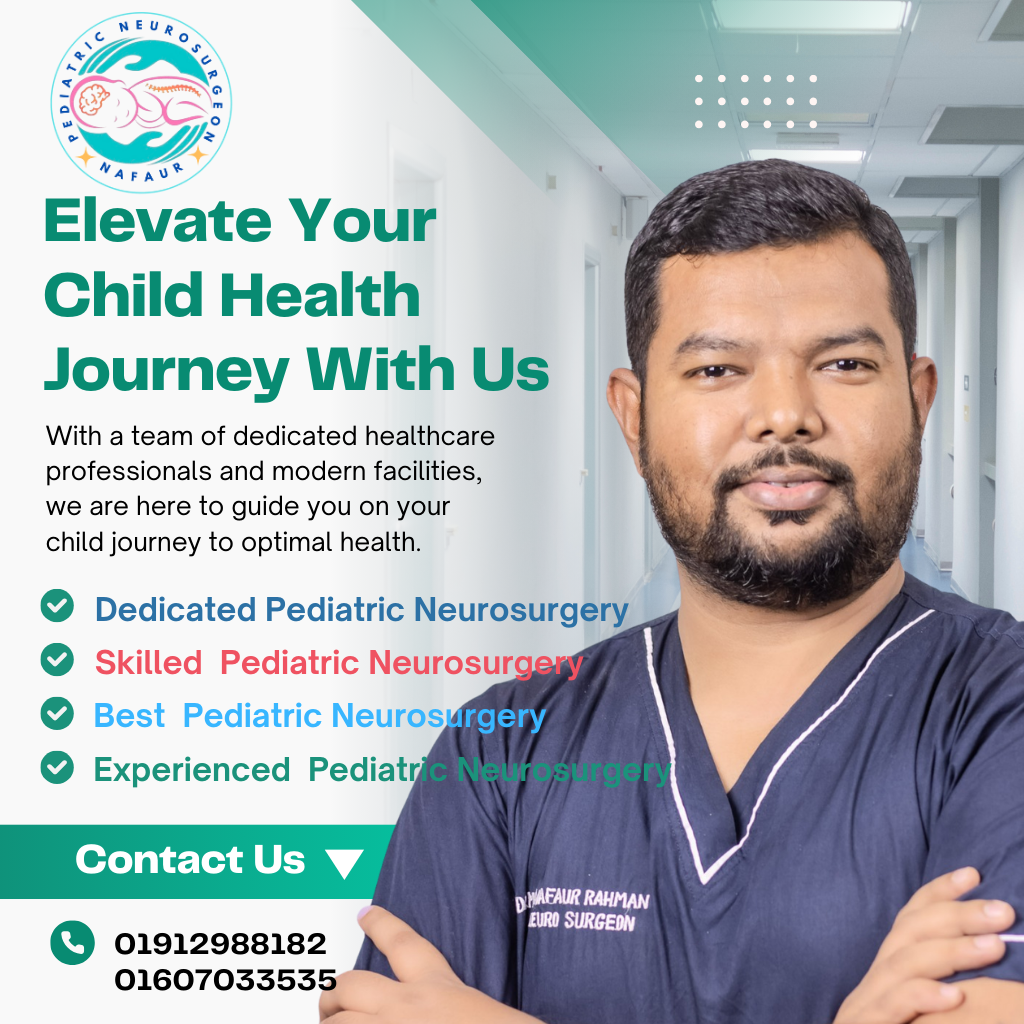Secondary Encephalocele
Secondary Encephalocele
Secondary encephalocele refers to a brain tissue herniation through a defect in the skull that develops after birth, unlike congenital encephaloceles present at birth. This condition occurs due to trauma, infection, surgery, tumors, or bone diseases that cause weakening or loss of part of the cranial bone and dura mater, allowing brain tissue and meninges to protrude outside the skull. Secondary encephaloceles are less common but represent a serious neurosurgical problem requiring expert diagnosis and treatment to prevent complications such as brain infection, neurological deficits, and CSF leakage. 🌍 Secondary Encephalocele in the Bangladesh Perspective 🏥 Causes include head trauma (road accidents, falls), infections (osteomyelitis), surgical complications, and sometimes untreated tumors or bone diseases 🧠 Delayed or inadequate treatment of skull fractures or infections in children can increase risk 🏥 Many cases present late due to lack of specialized pediatric neurosurgical services outside Dhaka and major cities ⚠️ Misdiagnosis as scalp cysts or abscesses is common in peripheral hospitals 👨⚕️ Specialized centers like National Institute of Neurosciences & Hospital (NINS) and Bangladesh Paediatric Neurocare Centre provide advanced care for these complex cases ⚠️ Causes and Risk Factors Traumatic skull fractures with bone loss or dural tear Post-surgical defects after tumor removal or cranial surgeries Infections like osteomyelitis leading to bone destruction Radiation-induced bone damage in oncological cases Bone diseases such as Paget’s disease or fibrous dysplasia (rare in children) Poor wound healing or infections in pediatric patients 🧠 Signs and Symptoms 👶 Visible or palpable swelling over the skull at the site of prior injury or surgery 💧 Clear fluid discharge suggesting CSF leak 🧒 Headache, seizures, neurological weakness, or altered consciousness if brain tissue involved 🔥 Signs of infection such as fever, redness, or pus if abscess forms 🩸 Recurrent meningitis or brain abscess from untreated defects 🦴 Skull deformity or defect palpable on examination 🔍 Diagnosis and Evaluation 🦴 CT Scan with 3D Reconstruction to detect skull defect size and location 🧲 MRI Brain with contrast to visualize herniated brain tissue and dural tears 💧 Beta-2 transferrin test on nasal or wound discharge to confirm CSF leak 🩺 Blood tests to rule out infection 🧬 Neurological assessment and developmental evaluation 🛠️ Surgical Management Surgery is the cornerstone of treatment for secondary encephaloceles, aiming to: ✅ Excise nonviable brain tissue and infected material 🔒 Repair dura mater and close CSF leaks 🦴 Reconstruct skull defects using autologous bone grafts or synthetic materials 🛡️ Prevent recurrent infections and restore structural integrity 👶 Preserve neurological function and minimize complications Surgical Approach Careful preoperative planning using imaging Craniotomy or tailored skull flap to access defect Microsurgical dural repair with grafts Cranioplasty with titanium mesh, bone cement, or autograft Postoperative infection control and neurocritical care 🏥 Postoperative Care and Follow-Up Intensive monitoring for CSF leaks or infection recurrence Prophylactic antibiotics and wound care Neurological rehabilitation if deficits present Regular imaging follow-up to ensure repair integrity Supportive care with physiotherapy and developmental monitoring 🔄 Prognosis and Long-Term Outcomes With timely surgical repair and multidisciplinary care: Most children regain normal cranial anatomy and neurological function Risk of recurrent infection or CSF leak significantly reduced Early intervention prevents life-threatening meningitis and brain abscess Ongoing follow-up ensures healthy growth and development 👨⚕️ Why Choose Dr. Md. Nafaur Rahman? Specialist in complex pediatric neurosurgical reconstructive procedures Extensive experience managing trauma and post-surgical skull defects Leading pediatric neurosurgeon at NINS and Bangladesh Paediatric Neurocare Centre Commitment to compassionate, family-centered care with modern surgical technology Trusted by families nationwide for safe, expert treatment of rare pediatric brain conditions 📞 Consult Dr. Md. Nafaur Rahman for Secondary Encephalocele Management in Bangladesh Dr. Md. Nafaur Rahman Assistant Professor, Department of Pediatric Neurosurgery, NINS Chief Consultant, Bangladesh Paediatric Neurocare Centre 📱 For appointments: 📞 01912988182 | 📞 01607033535 🌐 www.neurosurgeonnafaur.com
Encephalocele
